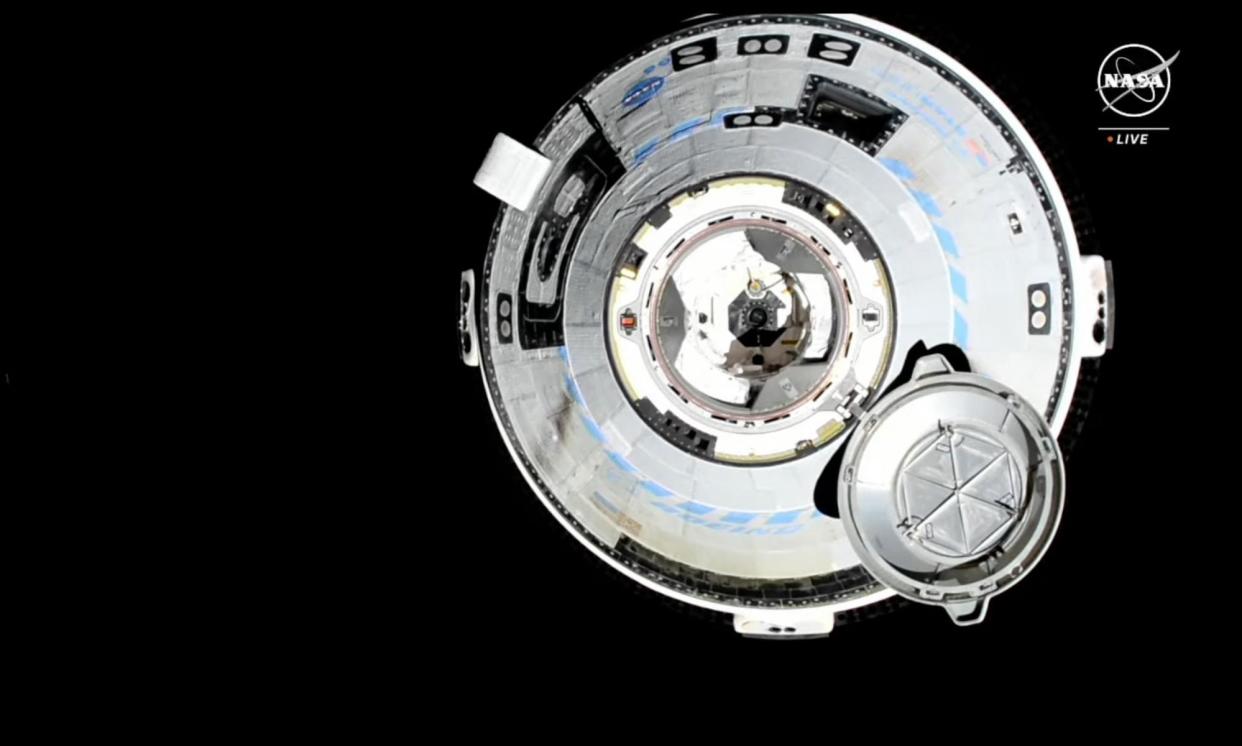Boeing Starliner capsule docks with space station despite helium leaks

Boeing’s pioneering Starliner capsule and its two astronauts overcame a technical hiccup to finally dock with the international space station on Thursday, as Nasa continued to monitor two separate helium leaks that have concerned mission managers.
A first attempt at the rendezvous was called off when engineers at the US space agency detected a problem with reaction control thrusters essential to the high-precision docking maneuver.
But a “hotfire” test reactivated at least four of the thrusters, enabling Starliner to make an autonomous historic first docking with the ISS at 12.34pm CT.
With SpaceX’s Dragon capsule attached to a port on the opposite side, it was the first time two US-built crewed spacecraft were simultaneously anchored to the orbiting outpost.
Earlier, two helium leaks were detected as the craft approached, Nasa said. The inert gas is used to power thrusters in the capsule that was carried atop a United Launch Alliance Atlas V rocket that blasted off from Cape Canaveral on Wednesday on the giant rocket’s first piloted test flight.
Engineers had discovered a small-but-persistent helium leak before launch that was deemed acceptable. Nasa said the two latest leaks were new and had been discovered after the spacecraft arrived in orbit.
Related: Boeing’s Starliner spacecraft lifts off for first crewed flight after multiple delays
“Two of the affected helium valves have been closed and the spacecraft remains stable”, the agency said in a post on X.
News of the leaks first came from a Nasa broadcast when the astronauts Butch Wilmore and Suni Williams were about to go to sleep and mission control informed them that they needed to shut down two valves.
“Looks like we picked up a couple more helium leaks,” mission control said. Wilmore responded: “We are ready to … find out exactly what you mean by picked up another helium leak, so give it to us.”
“Butch, I’m sorry. We’re still getting the story together,” mission control replied.
“We have some issues to watch overnight when in regards to the helium leaks that was just brought up, and we have a lot of smart people down here on the ground that are going to take a look at this stuff and keep an eye on it, but the vehicle is in a configuration right now where they’re safe to fly,” the Boeing aerospace engineer Brandon Burroughs said on the Nasa broadcast, according to CBS News.
The Starliner mission is the first time the spacecraft has carried a crew to space. The two crew members are expected to spend just over 24 hours traveling to the space station and eight days with seven astronauts and cosmonauts already on board in the orbiting laboratory.
The current mission, a crew flight test, is the product of a joint venture between Boeing and Lockheed Martin to rival Elon Musk’s SpaceX Dragon capsule and operated under Nasa’s commercial crew program.
The Starliner launch is only the sixth inaugural journey of a US crewed spacecraft since the start of the space race in the late 1950s. “It started with Mercury, then with Gemini, then with Apollo, the space shuttle, then [SpaceX’s] Dragon – and now Starliner,” the Nasa administrator, Bill Nelson, said last month.
The Starliner is a variant of the Atlas V military rocket using Russian-developed engines but with two strap-on boosters. Two previous launch attempts were delayed, on 6 May and 1 June, coming after earlier delays that included reports of helium leaks in the service module.
On the first attempt, an issue with a valve on the second stage, or upper portion, of the rocket. On the second, a computer tripped an automatic hold just 3 minutes and 50 seconds from liftoff. That was later attributed to a single ground power supply fault within one of the launch control computers.
“We don’t launch until it’s right,” Nelson said after the Starliner successfully blasted off on Wednesday.

 Yahoo News
Yahoo News 
